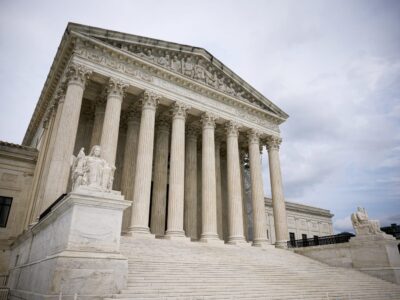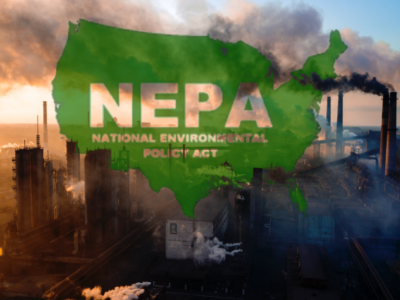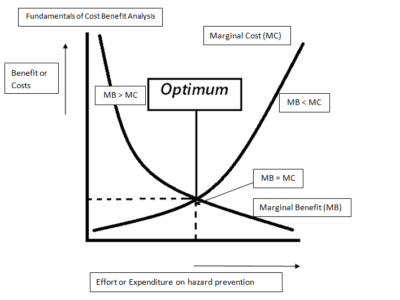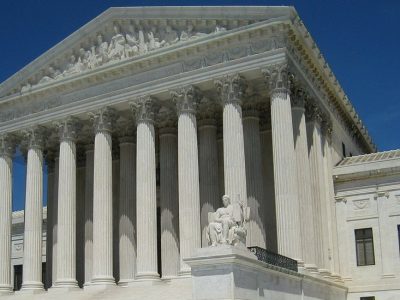Administrative Law
Emergency Powers Aren’t What They Used to Be
In the post-WW2 era, courts bent over backwards to accomodate emergency actions. Not true today, as Trump is finding out.
In mid-century America, emergency powers were truly potent. But those days are gone. In his two terms as President, Trump has declared 21 national emergencies, including eight since January 20. This glut of “emergencies” can only further discredit the whole concept. He and his advisors seem to see those as creating nearly magical legal powers, allowing them to deport people without hearings, run roughshod over environmental safeguards, and impose tariffs willy-nilly. They are probably in line for a disappointment. Judges are no longer in awe of emergency powers.
CONTINUE READINGThe Assault on NEPA: A Threat Assessment
NEPA is under multiple attacks. Which are the most serious?
NEPA, the law governing environmental impact statements, is under concerted assault from Congress, the White House, and the Supreme Court. As we will see, the Supreme Court’s recent decision in the Seven County Infrastructure Case is probably the biggest problem. Notably, the debate over NEPA has taken place without much hard data about its effectiveness or costs, so everyone seems free to make their own assumptions.
CONTINUE READINGListing Trump’s Environment and Energy Executive Orders
I’m counting 35 so far. But I wouldn’t be shocked to learn that I’d missed something.
I’ve put together a list of all the Trump 2.0 executive orders that I could identify dealing with environment or energy. Just to keep you reading, I should tell you that the most important ones are near the end. Whatever you might say about Trump, no one can question his zeal for eliminating environmental protections.
CONTINUE READINGPerhaps the Least Qualified FERC Nominee in History
Trump’s nominee seems to have essentially no relevant experience or expertise.
LaCerte has had one brush with energy regulation. He was a special counsel at the big ouil and gas law firm, Baker Botts for two years, starting in January 2023. While there, he worked on energy litigation and environmental safety and incident response issues. None of that has much to do with FERC,
CONTINUE READINGThe Environment and the Rule of Law
Without the rule of law, environmental protection has no chance of succeeding.
It’s no coincidence that the environment and the rule of law are both targets, because environmental protection is particularly dependent on the legal system for support. There is a lot of wisdom to the slogan, “The Earth needs a good lawyer.”
CONTINUE READINGTrump’s Funniest Executive Orders
Yes, they’re destructive and often cruel. But sometimes, they’re also unintentionally funny.
Imagine some later historian flipping through the pages of the Federal Register and coming upon Executive Order 14264, “Maintaining Acceptable Water Pressure in Showerhead.” Think of it: he went to incredible lengths to attain the ultimate power, and this is what Trump does with it. Or there’s the one where he aims the full might of the U.S. government at the goal of “Ending Procurement and Forced Use of Paper Straws.” Who says Americans can’t dream big anymore?
CONTINUE READINGShortchanging the Environment While Making NEPA More Chaotic
Trump replaced a coherent set of rules governing the executive branch with a welter of agency-specific regulations.
In one of Trump’s first executive orders, he eliminated a centralized system that Jimmy Carter initially set up to issue regulations governing environmental impact statements. Instead, he called on each agency to issue its own regulations, which seems to have caused the predictable amount of confusion. There seems to be little rhyme or reason in the variations
CONTINUE READINGDoes the Law Require Cost-Benefit Analysis?
According to the D.C. Circuit, the answer is no.
Putting aside the particulars of the case, it seems wrong to apply the same standard (monetized cost-benefit analysis) to every provision in environmental law. These provisions have different language, reflecting differences in congressional priorities. Some provisions, for instance, may be designed push industry to find innovative solutions; others may reflect Congress’s value judgments or a desire to limit EPA’s discretion. We shouldn’t assume that the myriad differences in statutory language are irrelevant and that Congress wanted agencies to adopt the same method of making decisions in every case.
CONTINUE READINGDon’t Panic About the Supreme Court’s Ruling on Universal Injunctions
The Court left open a variety of workarounds. At least for the now.
In a case involving birthright citizenship, Trump v. CASA, the Court limited the power of judges to issue universal injunctions that protect everyone subject to an illegal government policy. President Trump hailed this outcome as a great victory, and it does provide more maneuvering room for him and future presidents. But the Court’s reasoning does not implicate most judicial rulings about the legality of regulations. The Court also left open some important questions that will be furiously litigated in the lower courts or the Supreme Court itself.
CONTINUE READINGHow To Botch A CEQA Analysis
LA Metro’s draft EIR for the crucial Sepulveda Transit Corridor is thorough and careful, but it misses a key point: heavy rail is environmentally superior.
If you are from Los Angeles, you will get this. Q: What’s the best thing about the 405? A: Free parking. The 405 is the highway that runs down the west side of metropolitan Los Angeles, connecting the San Fernando Valley to west Los Angeles, down through the South Bay and into Orange County. Even …
Continue reading “How To Botch A CEQA Analysis”
CONTINUE READING












